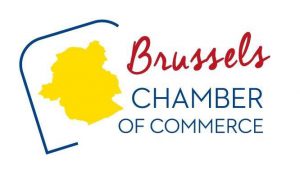Would it have become an impossible mission since the entry into force of the General Data Protection Regulation, abbreviated to ‘GDPR’? Some are thinking about it. However, we will see that marketing is not as hampered as what can sometimes be understood and that it is not appropriate to mix them. Explanations:
Not to be confused by the GDPR and the Electronic Communications Act
The GDPR is the regulation that protects the personal data of European citizens. It lays down different legal bases for the processing of personal data, but most often does not apply to commercial marketing. Indeed, commercial marketing is governed mainly by the European Directive 2002/21/EC on electronic communications transposed into Belgian law by the Law of 13 June 2005. It provides the extent to which we can explore which customer and through which channel.
Where is the border between the two texts?
The border between the GDPR and the 2005 Electronic Communications Act is mainly at the level of consent, and more specifically the so-called opt-in. Thus, where an “opt-in” is required in order to be able to prospect, the rules of the GDPR will apply by analogy. Otherwise, for opt-outs, the rules of the 2005 law will be applied.
“Opt-in”/“Opt-out”: what are we dealing with?
The opt-out is the possibility for the person prospected to express his will no longer be contacted. Thus, the ‘opt-out’ implies the possibility of contacting the person concerned as long as the person concerned does not object to it. On the other hand, ‘opt-in’ prohibits the taking of contact in the absence of prior explicit consent from the person concerned for that purpose.
The conditions attached to the ‘opt-out’ call for the possibility for the person concerned to easily manifest his or her will to no longer be contacted. This possibility must be provided for in the communications by email (for example, ‘I no longer wish to receive this type of communication’) and that information must be given by telephone. The event of withdrawal must be free of charge for the customer/prospect. For telephone exploration, the data subject shall have the right to know where the appellant holds his or her data and the intended use. The opt-out therefore does not mean that you can do what you want the data you hold.
Similarly, it applies to “opt-in”, beyond the requirement to obtain the prior consent of the person concerned before any contact is taken, also the requirements of the opt-out mentioned in the paragraph above. (possibility of information on the provenance and use of data + possibility of delisting free of charge for the data subject). It is therefore not because a person has given you an “opt-in” and therefore his or her consent at a given moment, that he could not have the opportunity to change his mind from one day to the next. In other words, at the time of each communication, it is irrelevant whether the consent was obtained via an ‘opt-in’ or that it is an ‘opt-out’, the person contacted must have the possibility of being able to unsubscribe and no longer receive the communications in question. Similarly, the prospective undertaking must keep a proof of the consent of the person.
How do I know which rules apply?
In concrete terms, the nature and type of exploration will depend on the application of the principles of the GDPR or the 2005 Electronic Communications Act.In any case, what is important is that the opt-out principle prevails over the principle of “opt-in”, especially in the case of B2B.As a result, the 2005 law will more often be applied to the application of GDPG schemes.Figure:
Consider the different scenarios by distinguishing between B2B and B2C:
B2B
Emails on loyalty:
A loyalty email is an email with most often an offer of similar (similar) products or services to those which the customer has previously purchased.The loyalty email requires an existing customer relationship and is therefore no longer a prospect.Specifically, in B2B, the principle for email loyalty purposes is that of the opt-out.
Telephone search:
In the field of telephone exploration, it is possible to call for prospective prospects without first obtaining their consent., The only requirement is to ensure that the person sought is not included in the list www.ne-m-appelez-plus.be. That list, held by the association Do Not Call Me (abbreviated DNCM), was recognised by Royal Decree of 28 June 2015 as an official list on the subject.Indeed, since 31 May 2014, the Belgian Economic Law Code provides for the possibility for individual telephone subscribers, whether natural or legal persons, to object to the use of their telephone number (s) for marketing purposes. The list is accessible for consideration via the DNCM website. Its use by commercial users via telephone is widely recommended, as fines up to EUR 80.000 can be imposed.
Email:
Email is proscribed in B2B without prior consent, and therefore without ‘opt-in’, unless two conditions are met:
1) the advertising message is sent to a professional address of a natural person
2) the purpose of the solicitude is in relation to the occupation of the person surveyed.
In accordance with the above, it can therefore be concluded that the exceptions are sufficiently broad to make commercial prospecting by email in B2B, provided that it is not spamming, but personalised messages relating to the profession of the person concerned and to the business address of the person concerned.For example, a prospecting operation to promote the performance of a CRM addressed to the professional mail of a financial manager will not require prior consent if the person is informed about the processing operation and its right to object. Conversely, if the prospection concerns a purchase offer for a new lawnmower and therefore not linked to its professional activity, prior consent will be necessary.
Sms:
As in the case of the email survey, the same rules apply for the prospection by sms.
B2C:
As regards B2C, the applicable rules diverge significantly:
Emails of loyalty:
For emails of loyalty in the context of an existing customer relationship, the rule remains the same, it is sufficient to apply the terms of the ‘opt-out’ as it is a new one of an existing client relationship.
Telephone search:
In B2C, the telephone search follows the opt-out principle and the same rules as for the B2B telephone survey apply (cf. the telephone search in B2B).
As regards telephone searches, attention should be given to the information to be given to the prospect of having his or her data being obtained, as well as to the express right of the prospect of the latter to be able to object to any subsequent solicitation, as well as to check that the number called is not registered on the site of the DNCM.
Email:
In B2C, the email shall be prohibited unless the data subject has given its prior consent. In practice, it will be difficult to obtain prior consent to explore a person, such as the search operation, often in the form of first contact with the prospect of exploration. However, it is still possible under condition for the prospect of having explicitly agreed to it by, for example, a ticked box below a contact form stating that it could be kept informed of the commercial offers of the undertaking in question.
Sms:
In B2C, the principle of ‘opt-in’, therefore of prior consent, also takes precedence over the sending of an SMS to a customer.
What about newsletters?
In B2C, the principle is that of “opt-in”.
As regards B2B, no legislation precludes the application of the opt-out principle for the sending of a newsletter. However, in order not to risk at the outset that the trader in question is disintegrated and that we cannot therefore contact them any more, it may be useful to consider putting in place a more personalised marketing strategy in order to better adapt our message to the potential need of the prospect and to leave it up to the latter to opt for one or more newsletters.
Still got questions? Want to know more? Please do not hesitate to contact me:
For more guidance and exploration opportunities, Enterprise Europe Network helps European companies to innovate and internationalise. The network is present in more than 60 countries worldwide. It brings together 3000 experts from more than 600 member organisations. Do not hesitate to use our match-making platform https://www.brusselsnetwork.be/fr/





